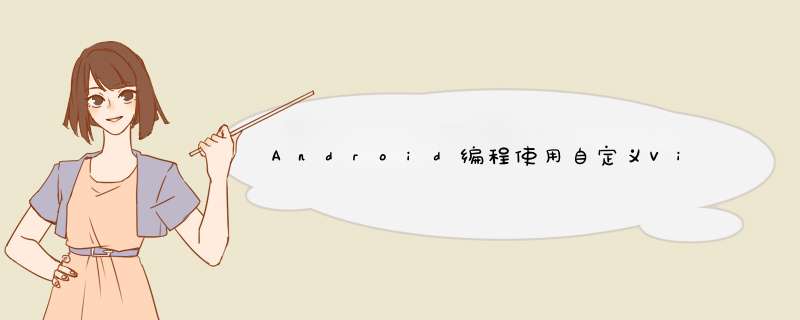
本文实例讲述了AndroID编程使用自定义view实现水波进度效果。分享给大家供大家参考,具体如下:
首先上效果图:
简介:
1.自动适应屏幕大小;
2.水波自动横向滚动;
3.各种绘制参数可通过修改常量进行控制。
代码不多,注释也比较详细,全部贴上:
(一)自定义组件:
/** * 水波进度效果. */public class WaterWaveVIEw extends VIEw { //边框宽度 private int stroke_WIDTH; //组件的宽,高 private int wIDth,height; /** * 进度条最大值和当前进度值 */ private float max,progress; /** * 绘制波浪的画笔 */ private Paint progresspaint; //波纹振幅与半径之比。(建议设置:<0.1) private static final float A = 0.05f; //绘制文字的画笔 private Paint textPaint; //绘制边框的画笔 private Paint circlePaint; /** * 圆弧圆心位置 */ private int centerX,centerY; //内圆所在的矩形 private RectF circleRectF; public WaterWaveVIEw(Context context) { super(context); init(); } public WaterWaveVIEw(Context context,AttributeSet attrs) { super(context,attrs); init(); } public WaterWaveVIEw(Context context,AttributeSet attrs,int defStyleAttr) { super(context,attrs,defStyleAttr); init(); } //初始化 private voID init() { progresspaint = new Paint(); progresspaint.setcolor(color.parsecolor("#77cccc88")); progresspaint.setAntiAlias(true); textPaint = new Paint(); textPaint.setcolor(color.WHITE); textPaint.setAntiAlias(true); circlePaint = new Paint(); circlePaint.setStyle(Paint.Style.stroke); circlePaint.setAntiAlias(true); circlePaint.setcolor(color.parsecolor("#33333333")); autoRefresh(); } @OverrIDe protected voID onMeasure(int wIDthMeasureSpec,int heightmeasureSpec) { super.onMeasure(wIDthMeasureSpec,heightmeasureSpec); if (wIDth == 0 || height == 0) { wIDth = getWIDth(); height = getHeight(); //计算圆弧半径和圆心点 int circleRadius = Math.min(wIDth,height) >> 1; stroke_WIDTH = circleRadius / 10; circlePaint.setstrokeWIDth(stroke_WIDTH); centerX = wIDth / 2; centerY = height / 2; VALID_RADIUS = circleRadius - stroke_WIDTH; radians_PER_X = (float) (Math.PI / VALID_RADIUS); circleRectF = new RectF(centerX - VALID_RADIUS,centerY - VALID_RADIUS,centerX + VALID_RADIUS,centerY + VALID_RADIUS); } } private Rect textBounds = new Rect(); //x方向偏移量 private int xOffset; @OverrIDe protected voID onDraw(Canvas canvas) { super.onDraw(canvas); //绘制圆形边框 canvas.drawCircle(centerX,centerY,VALID_RADIUS + (stroke_WIDTH >> 1),circlePaint); //绘制水波曲线 canvas.drawPath(getWavePath(xOffset),progresspaint); //绘制文字 textPaint.setTextSize(VALID_RADIUS >> 1); String text1 = String.valueOf(progress); //测量文字长度 float w1 = textPaint.measureText(text1); //测量文字高度 textPaint.getTextBounds("8",1,textBounds); float h1 = textBounds.height(); float extraW = textPaint.measureText("8") / 3; canvas.drawText(text1,centerX - w1 / 2 - extraW,centerY + h1 / 2,textPaint); textPaint.setTextSize(VALID_RADIUS / 6); textPaint.getTextBounds("M",textBounds); float h2 = textBounds.height(); canvas.drawText("M",centerX + w1 / 2 - extraW + 5,centerY - (h1 / 2 - h2),textPaint); String text3 = "共" + String.valueOf(max) + "M"; float w3 = textPaint.measureText(text3,text3.length()); textPaint.getTextBounds("M",textBounds); float h3 = textBounds.height(); canvas.drawText(text3,centerX - w3 / 2,centerY + (VALID_RADIUS >> 1) + h3 / 2,textPaint); String text4 = "流量剩余"; float w4 = textPaint.measureText(text4,text4.length()); textPaint.getTextBounds(text4,text4.length(),textBounds); float h4 = textBounds.height(); canvas.drawText(text4,centerX - w4 / 2,centerY - (VALID_RADIUS >> 1) + h4 / 2,textPaint); } //绘制水波的路径 private Path wavePath; //每一个像素对应的弧度数 private float radians_PER_X; //去除边框后的半径(即内圆半径) private int VALID_RADIUS; /** * 获取水波曲线(包含圆弧部分)的Path. * * @param xOffset x方向像素偏移量. */ private Path getWavePath(int xOffset) { if (wavePath == null) { wavePath = new Path(); } else { wavePath.reset(); } float[] startPoint = new float[2]; //波浪线起点 float[] endPoint = new float[2]; //波浪线终点 for (int i = 0; i <= VALID_RADIUS * 2; i += 2) { float x = centerX - VALID_RADIUS + i; float y = (float) (centerY + VALID_RADIUS * (1.0f + A) * 2 * (0.5f - progress / max) + VALID_RADIUS * A * Math.sin((xOffset + i) * radians_PER_X)); //只计算内圆内部的点,边框上的忽略 if (caldistance(x,y,centerX,centerY) > VALID_RADIUS) { if (x < centerX) { continue; //左边框,继续循环 } else { break; //右边框,结束循环 } } //第1个点 if (wavePath.isEmpty()) { startPoint[0] = x; startPoint[1] = y; wavePath.moveto(x,y); } else { wavePath.lineto(x,y); } endPoint[0] = x; endPoint[1] = y; } if (wavePath.isEmpty()) { if (progress / max >= 0.5f) { //满格 wavePath.moveto(centerX,centerY - VALID_RADIUS); wavePath.addCircle(centerX,VALID_RADIUS,Path.Direction.CW); } else { //空格 return wavePath; } } else { //添加圆弧部分 float startDegree = calDegreeByposition(startPoint[0],startPoint[1]); //0~180 float endDegree = calDegreeByposition(endPoint[0],endPoint[1]); //180~360 wavePath.arcTo(circleRectF,endDegree - 360,startDegree - (endDegree - 360)); } return wavePath; } private float caldistance(float x1,float y1,float x2,float y2) { return (float) Math.sqrt((x1 - x2) * (x1 - x2) + (y1 - y2) * (y1 - y2)); } //根据当前位置,计算出进度条已经转过的角度。 private float calDegreeByposition(float currentX,float currentY) { float a1 = (float) (Math.atan(1.0f * (centerX - currentX) / (currentY - centerY)) / Math.PI * 180); if (currentY < centerY) { a1 += 180; } else if (currentY > centerY && currentX > centerX) { a1 += 360; } return a1 + 90; } public voID setMax(int max) { this.max = max; invalIDate(); } //直接设置进度值(同步) public voID setProgressSync(float progress) { this.progress = progress; invalIDate(); } /** * 自动刷新页面,创造水波效果。组件销毁后该线城将自动停止。 */ private voID autoRefresh() { new Thread(new Runnable() { @OverrIDe public voID run() { while (!detached) { xOffset += (VALID_RADIUS >> 4); SystemClock.sleep(100); postInvalIDate(); } } }).start(); } //标记VIEw是否已经销毁 private boolean detached = false; @OverrIDe protected voID onDetachedFromWindow() { super.onDetachedFromWindow(); detached = true; }}(二)使用方法:
在xml布局中引入上述组件,然后在activity或fragment中设置属性:
WaterWaveVIEw bar = (WaterWaveVIEw) getActivity().findVIEwByID(R.ID.water_wave_vIEw); bar.setMax(500); bar.setProgressSync(361.8f);
更多关于AndroID相关内容感兴趣的读者可查看本站专题:《Android开发动画技巧汇总》、《Android编程之activity *** 作技巧总结》、《Android视图View技巧总结》、《Android布局layout技巧总结》、《Android开发入门与进阶教程》、《Android资源 *** 作技巧汇总》及《Android控件用法总结》
希望本文所述对大家AndroID程序设计有所帮助。
总结以上是内存溢出为你收集整理的Android编程使用自定义View实现水波进度效果示例全部内容,希望文章能够帮你解决Android编程使用自定义View实现水波进度效果示例所遇到的程序开发问题。
如果觉得内存溢出网站内容还不错,欢迎将内存溢出网站推荐给程序员好友。
欢迎分享,转载请注明来源:内存溢出

 微信扫一扫
微信扫一扫
 支付宝扫一扫
支付宝扫一扫
评论列表(0条)